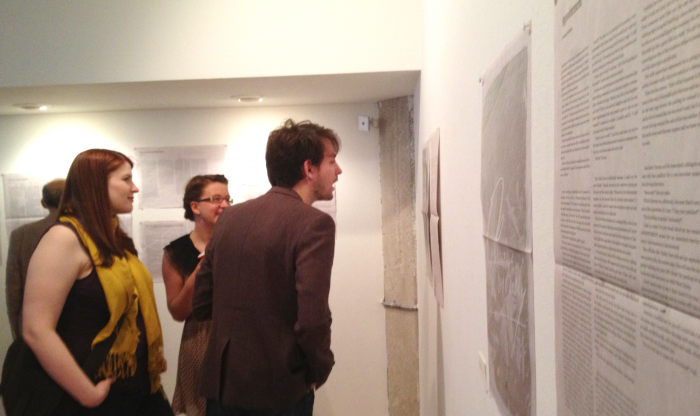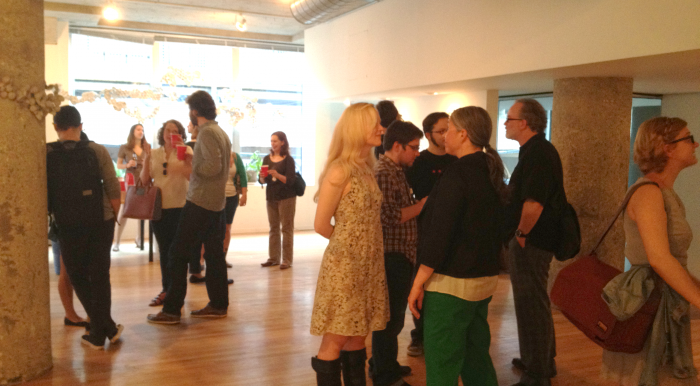
At a gallery in River North as I was reading Ramsin Canon’s “Scipio, Nasica,” I stood dazed, wondering if her road trip through Utah to find her real mother was fact or fiction—the accompanying art offered very cryptic clues. And after all, the only preface I heard of this show was that eight artists were paired with eight writers. But you didn’t know which came first, the writing or the design.
This one-night artistic collaboration, 8×8, presented by Chicago blog pioneer, GapersBlock and gallery space, The Coop, was all about writing influencing art and art influencing writing, with proceeds from the event going to community literacy initiative, Open Books.
Ranging from the sidesplittingly comedic (like “Mark Wahlberg Hates America”) to the tragically reflective (like “Appointment”), writers like Patrick Somerville, Claire Zulkey, Kevin Guilfoile, William Shunn, Wendy McClure, Scott Smith, Ramsin Canon and Veronica Bond shared the gallery walls with designers Jesse Hora, Andy Luce, Chad Kouri, Ina Weise, Letterform, Ryan Sievert, Paul Octavious and Kyle Fletcher.
What struck me about this exhibit, aside from the inspiring collaboration itself, was how dependent art and design is to storytelling and copy, and vice versa.
For the purpose of this exhibit, the allure came from the mystery—if the writer saw the artwork before writing, could that mean it was fiction? Do you even want to know? For the purposes of writing copy to accompany design for a website or app, on the other hand, you aim to make it parallel—otherwise, you’re doing it wrong.
There’s a tone and a voice in design: a visual narrative. It’s in the ornate flourishes of typography, or in the soothing hues of the color scheme or perhaps a brand’s logo itself evokes a sense of heritage and therefore trust you feel before even reading the About Us page. The challenge is in making copy and visual design both deliberate and meaningful.

